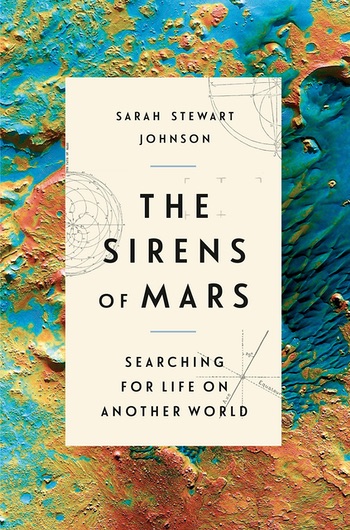Review: The Sirens of Marsby Jeff Foust
|
| “It was then, on that trip, that idea of looking for life in the universe began to make sense to me,” she writes. “In finding than fern, I also found something small, fragile, and worth cultivating deep inside myself.” |
The book is part history of Mars exploration and part memoir tracing her own interest in the planet. The former is a fairly straightforward review of the highs and lows of studies of Mars, including Percival Lowell’s observations, the disappointments of the early Mars missions that made Mars to appear to be a dead world, and the resurgence of interest in recent years as missions have provided new evidence that early Mars was at least habitable, and possibly inhabited. That’s interleaves with Johnson’s own experience, dating back to college at Washington University in St. Louis, where she studied under a leading Mars scientist, Ray Arvidson, as an undergrad.
It was during a college field trip to Hawaii that Johnson had the moment that set her on the path of becoming a planetary scientist. Near the summit of Mauna Kea, she stumbled across a single fern, “impossibly triumphant” in the cold, arid terrain of the mountaintop. “It was then, on that trip, that idea of looking for life in the universe began to make sense to me,” she writes. “In finding than fern, I also found something small, fragile, and worth cultivating deep inside myself.”
She provides glimpses of that career path throughout the book, including both participating on the science teams of missions as well as field work on Earth, from Antarctica to Australia, studying life in extreme conditions that could yield insights into life on Mars. That’s balanced with a personal life that includes marriage and children: she initially looks forward to being at JPL for the landing of Curiosity until she finds it’s the same day as the due date of her first child.
While the other thread of the book—the history of Mars exploration—covers familiar ground, she does a good job profiling many of the people involved. This includes not just famous figures, like Lowell and Carl Sagan, but lesser known ones like Wolf Vishniac, who led the early development of experiments to search for life on Mars, only to have cost overruns force his design off the Viking landers. He died a short time later in Antarctica doing fieldwork. She also profiles Maria Zuber, who worked to get a laser altimeter instrument to Mars, only to lose it on Mars Observer; another version of the instrument flew successfully on Mars Global Surveyor. (Zuber was also Johnson’s PhD advisor at MIT.)
Unlike another recent book, The Search for Life on Mars, Johnson’s The Sirens of Mars is more about the science than the engineering; spacecraft (primarily US ones) are discussed primarily as a tool for achieving the science, rather than going in depth into their design and development. That makes sense: spacecraft are a means to an end, something often forgotten in the stories about their technological challenges or the policy battles to get them funded. That end, as Johnson describes in the book, is searching for evidence of life on Mars, and in the process better understanding our own place in the universe.
Note: we are temporarily moderating all comments submitted to deal with a surge in spam.
